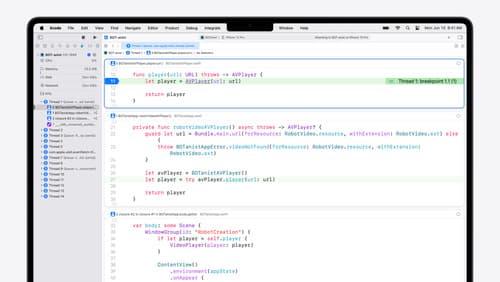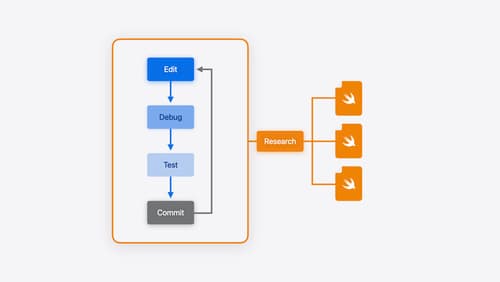How to do TDD in swiftUI apps
Asked on 2024-07-27
1 search
To implement Test-Driven Development (TDD) in SwiftUI apps, you can leverage the new Swift testing features introduced at WWDC 2024. Here are the steps and key concepts to get you started:
-
Set Up Your Test Target:
- Add a test bundle target to your project. In Xcode, choose
File > New > Target, then search forUnit Testing Bundlein the test section. Swift testing is the default choice for this template in Xcode 16. - Meet Swift Testing
- Add a test bundle target to your project. In Xcode, choose
-
Write Your First Test:
- Import the testing module and write a global function with the
@Testattribute. This attribute indicates that a function is a test. - Example:
import Testing @Test func testExample() { // Your test code here } - Meet Swift Testing
- Import the testing module and write a global function with the
-
Use Expectations and Traits:
- Swift testing uses
#expectand#requiremacros for assertions. These macros allow you to write simple or complex Swift expressions to verify test results. - Example:
@Test func testPlantingRoses() { let rose = Plant(type: .rose) #expect(rose.plantingStyle == .grafting) } - Meet Swift Testing
- Swift testing uses
-
Organize and Filter Tests:
- Use tags to group tests across different suites. Tags help in organizing and running specific groups of tests.
- Example:
extension Tag { static let planting = Tag("planting") } @Test(tags: [.planting]) func testPlantingRoses() { // Test code } - What’s new in Xcode 16
-
Parallelization and Concurrency:
- Swift testing supports parallel execution of tests using Swift concurrency. Each test runs in its own process, which helps in isolating state and improving test performance.
- Meet Swift Testing
-
Common Workflows:
- Customize tests or repeat them with different arguments. Use traits to specify conditions under which tests should run.
- Example:
@Test func testWithDifferentArguments() { for input in [1, 2, 3] { #expect(input > 0) } } - Meet Swift Testing
By following these steps and utilizing the new features in Swift testing, you can effectively implement TDD in your SwiftUI apps. For more detailed information, you can refer to the sessions mentioned above.

What’s new in Xcode 16
Discover the latest productivity and performance improvements in Xcode 16. Learn about enhancements to code completion, diagnostics, and Xcode Previews. Find out more about updates in builds and explore improvements in debugging and Instruments.

What’s new in Swift
Join us for an update on Swift. We’ll briefly go through a history of Swift over the past decade, and show you how the community has grown through workgroups, expanded the package ecosystem, and increased platform support. We’ll introduce you to a new language mode that achieves data-race safety by default, and a language subset that lets you run Swift on highly constrained systems. We’ll also explore some language updates including noncopyable types, typed throws, and improved C++ interoperability.

Xcode essentials
Edit, debug, commit, repeat. Explore the suite of tools in Xcode that help you iterate quickly when developing apps. Discover tips and tricks to help optimize and boost your development workflow.
